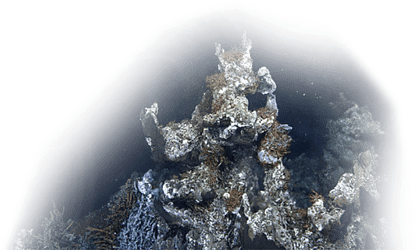The salt marshes, mud flats and eel grass meadows of temperate river estuaries are more effective than young coastal forests at capturing and storing carbon dioxide and may sequester this greenhouse gas for centuries, if not millennia, according to researchers from the University of Victoria (UVic).
The amount of carbon sequestered by the Cowichan estuary salt marshes on Vancouver Island is roughly double that of an actively growing 20-year-old Pacific Northwest forest of the same area, reports a study published in the journal Frontiers in Marine Science. The research was supported by UVic, Ocean Networks Canada, and the Cowichan Estuary Restoration and Conservation Association.
So-called blue carbon – carbon dioxide (CO2) captured from the atmosphere by marine plants and algae – collects as organic debris in estuary sediments where low-oxygen conditions prevent their decomposition.
“Oxygen is depleted very quickly from the surface of the sediment due to aerobic microbial processes. This prevents buried organic matter from being remineralized back into CO2, preventing it from returning to the atmosphere,” said lead author Tristan Douglas, a UVic graduate student in the School of Earth and Ocean Sciences, who spent two years analyzing the physical and chemical properties of sediment cores collected from the Cowichan Estuary.
That makes undisturbed estuaries a potent passive carbon storage system with the global potential to capture and store greenhouse gas (GHG) emissions at the gigatonne scale. Intertidal ecosystems – especially those in the tropics – can be 20 to 60 times more effective than forests at capturing and storing carbon dioxide. However, compromised estuaries can and do release carbon on a similar scale, the authors warn.
Plant species like salt marsh grasses and sedges, mangrove forests and seagrasses are particularly efficient natural carbon sinks. They capture and store up to 70 per cent of the organic carbon resident in marine systems, despite only occupying 0.2 per cent of the ocean surface.
The report shows that the carbon sink capacity of the 466-hectare Cowichan-Koksilah Estuary has been compromised by industrial and agricultural activity since the area was settled by European colonists. Eel grass on about 129 hectares of the intertidal zone has been disturbed by log handling and storage, while about 100 hectares of salt marsh was drained for farming and cattle pasture. This has reduced its natural capacity to sequester carbon by about 30 per cent, equivalent to putting 53 typical gasoline-powered motor vehicles back on the road.
Images: ONC Chief Scientist Kim Juniper (left) and MSc graduate Tristan Douglas (right) processing a sediment core for blue carbon evaluation in the Cowichan Estuary, Vancouver Island, British Columbia. Credit: Cory Arnold
Policymakers would be wise to take note of the triple impact of undisturbed and restored estuaries, the researchers say. Wetlands act as a buffer against flood waters in the spring and as nurseries for aquatic species from crabs to salmon, in addition to mitigating atmospheric greenhouse gas emissions.
As the effects of climate change take hold and sea levels rise, coastal wetlands also provide valuable ecosystem services to coastal communities. Wetlands reduce the energy of ocean waves, mitigate storm surge damage, and shield coastlines from erosion. Left in their natural state, salt marshes accumulate sediment increasing their elevation, which may keep pace with sea level rise.
“We need to be looking at these kinds of Blue Carbon nature-based solutions to mitigate the impact of CO2 emissions on our climate,” said research supervisor and ONC chief scientist Kim Juniper.
The authors say restoration of the estuary can be pursued on two fronts. Preventing further disturbance by industrial activity and replanting eel grass could reap benefits in just a few years. Opening the dikes that prevent ocean water from flooding sea-level pastures would allow salt marshes to re-establish naturally and improve carbon sequestration capacity over decades and centuries.
Read the full study here: Blue Carbon storage in a northern temperate estuary subject to habitat loss and chronic habitat disturbance: Cowichan Estuary, British Columbia, Canada
This research benefitted from Indigenous knowledge of the pre-colonial condition of the estuary, based on interviews with local Elders in the report Proceedings of the Cowichan Tribes Estuary Workshop (2010). The research team wishes to thank the Indigenous knowledge holders for their valuable contribution.
This research was supported by the Cowichan Valley Regional District, the Cowichan Estuary Restoration and Conservation Association, Fisheries and Oceans Canada, and ONC. It supports ONC’s commitment under its Strategic Plan 2030 to advance ocean based climate mitigation and coastal resilience.
